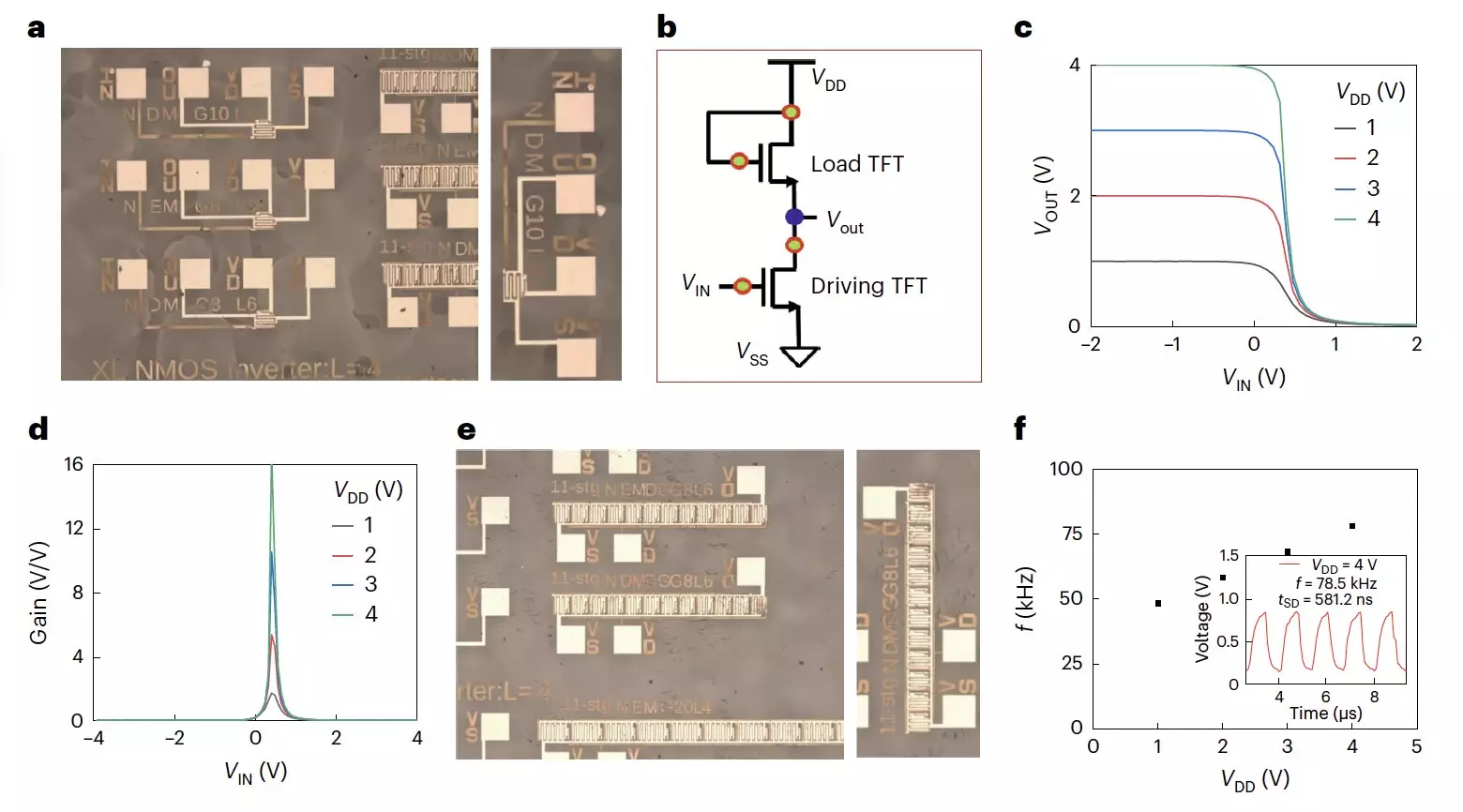Metal halide perovskites, known for their remarkable optoelectronic properties, have emerged as promising candidates for the development of cost-effective thin-film transistors. Recent studies focusing on tin (Sn) halide perovskites have successfully fabricated p-type transistors with impressive field-effect hole mobilities exceeding 70 cm2 V−1 s−1. However, the challenge lies in the development of n-type transistors with similar performance characteristics, as perovskite channels based on tin are not well-suited for this purpose.
To address the gap in the literature, research teams have begun investigating the potential of other metal halide perovskites, particularly lead halide perovskites, for designing n-type thin-film transistors. Lead halide perovskites, while promising, suffer from ionic defects that limit electron mobilities to around 3–4 cm2 V−1 s−1. In a groundbreaking study published in Nature Electronics, researchers introduced a novel strategy using formamidinium lead iodide (FAPbI3) perovskite to achieve field-effect mobilities of up to 33 cm2 V−1 s−1 in n-type transistors.
To further enhance the performance of n-type transistors, the research team employed a methylammonium chloride (MACI) additive. This additive played a crucial role in regulating strain in FAPbI3, thereby improving its overall properties. By focusing on strain relaxation and lead coordination, the researchers were able to stabilize the perovskite lattice and enhance surface morphology, crystallinity, and orientation. This approach also led to the development of low-defect perovskite-dielectric interfaces.
Initial tests conducted on the n-type transistors yielded highly promising results, including excellent electron mobilities, minimal hysteresis, and high operational stability under varying bias stresses. The research team successfully utilized these transistors to create all-perovskite unipolar inverters and 11-stage ring oscillators, showcasing their potential for practical electronic applications. Moving forward, this innovative fabrication strategy could pave the way for the development of high-performance integrated circuits containing metal halide perovskite transistors, ushering in a new era of cost-effective electronics.
Future Prospects and Integration
As the study progresses, researchers anticipate further testing and integration of n-type transistors into a wide range of electronic devices. The integration of metal halide perovskites into electronics holds the promise of revolutionizing the industry by offering high performance at a reduced cost. The potential for all-perovskite logic circuits and advanced electronic components highlights the significant impact of metal halide perovskites in shaping the future of thin-film transistors and integrated circuits.


Leave a Reply